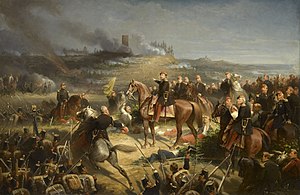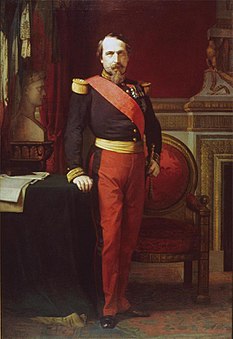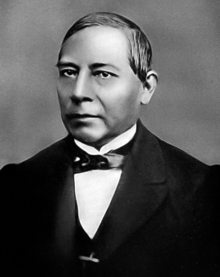Camarone
Born on April, 15, 1828, in the southern French city of Chalabre, only a few decades removed from the military exploits of Emperor Napoleon Bonaparte and his Imperial legions, to better his station in life, Jean Danjou enrolls in the Ecole Speciale Military De Saint-Cyr ... the French West Point, created by the Emperor himself in 1802, and in his three years of military study, takes to heart the academy's creed, "Training for Victory." Graduating as an officer at the age of twenty, Danjou is first assigned to the 51st Regiment of the Line, before transferring to the relatively new (King Louis Philippe creates the organization on March 10, 1831) French Foreign Legion in 1852 ... he will be a member of the elite French force for the rest of his life. Supporting French colonization efforts in Algeria, on 5/1/1853, during a mapping assignment of the Kabylie region, Danjou loses his left hand when his musket explodes. An injury that might cripple most other men, the tough officer just designs a prosthetic wooden hand as a replacement and goes on with his career (an articulated finely sculpted piece of wood he straps to his wrist with a large leather sheath and then covers with a formal uniform dress white glove). Promoted to first lieutenant later in the year, he fights with the French Army in the Crimean War and is among the thousands of troops that see action during the Siege of Sevastopol (a year long blood bath in which over two-hundred-thousand soldiers from a myriad of nations will be killed or wounded). He is made a captain on June 9, 1855, and during Europe's Austro-Sardinian War, adds to his battle resume by participating in the 1859 French victories of Napoleon III at Magenta and Solferino, before serving a tour of duty for the Legion in Morocco.

The Siege Of Sevastopol

The Battle Of Magenta

The Battle Of Solferino
In 1862, when Napoleon III uses the excuse of non-payment of funds to try and expand his empire by taking over control of Mexico, with his puppet leader, Austrian born Emperor Maximilian I (the younger brother of Austrian Emperor Francis Joseph I) at its head, Danjou is part of the expeditionary force sent to defeat the government of President Benito Pablo Juarez Garcia (a window of closing opportunity, at the time, the United States is unable to enforce its Monroe Doctrine against European forces entering the area due to its preoccupation with a little bloodbath known as the American Civil War). Assigned to insure the safe moment of French supply convoys, Danjou is the quartermaster of a regiment of Legionaires under the command of Colonel Pierre Jeanningros ... and on 4/30, there is a convoy that must get through to the French forces besieging the Mexican town of Puebla ... a convoy of two companies of fusilier guards, food, sixty wagons of of ammunition, siege guns, one-hundred-and-fifty mules, and a payroll of four million francs in gold (all under the immediate direction of Captain Jacques Cabossel). Advised of the convoy, and receiving information from an Indian spy that an ambush is being planned, Jeanningros decides to enhance the chances of the unit making a successful journey by sending a company of Legionaires ahead to scout for trouble (a typical Legion unit, the group consists of Frenchmen of course, plus Belgian, Swiss, Dane, Dutch, and German soldiers, two are former winners of the French Legion of Honor ... sixty-two men in all to march with three officers, each man carrying a rifle and approximately 60 rounds of ammunition for the mission) ... but it is a unit that is under-strength by half due to disease (dysentery, malaria, and a horror known as vomito negro, black vomit) and fighting the enemy since arriving in Mexico, one without any officers to oversee the mission ... so Danjou volunteers to step away from his usual duties and take the unit's command (Second Lieutenants Napoleon Vilain and Clement Maudet also volunteer for the trip).

Napoleon III

Maximilian I

Juarez
Shortly after midnight on 4/30, the sixty-five men march off along what the French call, "The Fever Road" (the convoy leaves a few hours later and takes an alternate route towards Puebla) ... and everything goes well at first. As the dawn sun is just rising, and after passing through the small village of Camerone (one soldier describes the place as being fit only to be "inhabited by vultures"), the unit stops to refill their canteens and brew a little coffee ... and their long day of troubles begin, Mexican cavalry is spotted crossing the road ahead (two-hundred-and-fifty horsemen of the Cotaxtia Squadron, under the command of Tomas Algonzanas). Reacting immediately, knowing his command stands no chance against hordes of armed riders out in the open, Danjou orders his men to retreat back to Camerone, and the relative safety of an abandoned hacienda there featuring ten-foot-high walls ... a defensible position if his men can make it back. Using the tactic that contributed to Napoleon's defeat at Waterloo, the unit forms a hollow square and fights off repeated cavalry charges to make it back to Camerone (along with using the cover of a few trees and a cactus filled ditch), but in the process has men wounded, and sixteen Legionaires are captured (also lost are the pack animals carrying the unit's extra food, water, and ammunition). Hacienda already occupied by Mexican troops by 9:00 when they reach it, Danjou's unit instead takes refuge in a stable on the property surrounded by adobe walls, with two gates and another opening ... with only precious seconds available before they will be put upon, the men use rocks and rubble to close off the openings and then take up firing positions around the compound.
 Site Of The Struggle Off Along The Gulf Of Mexico
Site Of The Struggle Off Along The Gulf Of MexicoAt 9:30, Danjou receives the first request for his surrender, which he greets with disdain, replying, "We have munitions. We will not surrender." Battle on, forty-nine Legionaires take on a force that will eventually swell to over 3,000 men (under the command of Colonel Francisco de Paula Milan), and the stable becomes a hell-on-earth of attacks and sniping from all directions, cries for unavailable water, baking temperatures over a hundred degrees, screams of pain, a whiteness that blinds the eyes (from the sunlight bouncing off the adobe walls), the smell of gunpowder, explosions, and dashed hopes (hearing bugling nearby shortly after noon, the men think a relief column is about to arrive, but it is only more soldiers of the Mexican army) ... hour after hour after hour as the force is slowly whittled down to almost nothing! During the struggle, sensing what is coming, Danjou crawls to each man in his unit, gives them a sip of wine his batman has carried into the battle, and with a kiss to his wooden hand, has each swear they will remain true to the Legion and die before surrendering ... all make the pledge. At around noon, Danjou honors his, taking a killing round to the chest as he moves about his men in preparation for the next assault ... he is thirty-five-years-old.

Danjou
Assuming command of the remaining fighters, Second Lieutenant Vilain in turn refuses to surrender, rallying the command by stating, "My children, I command you now. We may die, but we will never surrender!" And his men fight on, with Sergeant Vincent Morzycki screaming "Merde!" at another request for surrender. At around 4:30 in the afternoon, Vilain too is gunned down orchestrating the stable's defense and command now goes to Second Lieutenant Maudet. Numbers dwindling, the twenty remaining fighters are reduced to twelve, and then with another attack and the capture of three corporals and two fusiliers, there are six men left, each with a single bullet ... and Maudet gives his last order, when the Mexicans approach next, the men will fire a last volley and then charge with fixed bayonets. At about 6:30 in the evening the moment comes ... one Legionaire, a Belgian named Victor Catteau, is struck down with nineteen bullets trying to protect Maudet, Maudet is mortally wounded, another soldier named Leonhart is also struck down, and the last three men fight on as they are beaten to the ground by Mexican rifle butts. About to be torn apart, the men are halted by the sword of a French-born, Mexican colonel named Campos. Incredibly, Corporal Philipe Maine, and Legionaires Wenzel and Constantin, still refuse to surrender, with the senior man present, Maine, demanding they will only stop fighting if Maudet's wounds are treated and they can escort Danjou's body back to France while retaining their broken rifles and equipment. Overcome by emotion, Campos replies, "One refuses nothing to such men as you," and the battle is over. Marched before Colonel Milan, the Mexican commander will ask where the other defenders are, and after Campos responds that there are no more, Milan looks at the three men before him and utters a response that will be immortal praise to the Legionaires ... "Pero, no son hombres, son demonios" ... "Then these are not men, but devils." Indeed!
Finally over, the heroic defeat transforms, and eventually becomes a victory for all the French Foreign Legion means to its members and the people of France ... annually as of 1931, 4/30, is Camerone Day (a day in which Legionaires are forgiven almost any offense short of murder) ... a formal celebration in every Foreign Legion outpost around the world of the Legion's courage and refusal to be defeated ... and at the Legion headquarters in Aubagne, France, a memento is taken from the small wood-and-glass casket it resides in and paraded before Legionaires, French politicians, and visiting dignitaries by a specially selected, highly decorated former Legionaire (it is considered the ultimate honor a living Legionaire can attain) ... the most sacred talisman of the legion, the wooden hand of Captain Danjou, the hand men kissed as they made their vows to never surrender on this day in 1863 (found on the battle site by a local rancher and kept as a souvenir, the hand is sold to the French commander in Mexico a few years later, a former member of the Legion himself, General Achille Bazaine). May Danjou and his men always, and the men they fought against, always be remembered!
Thanks for some more interesting reading.
ReplyDelete